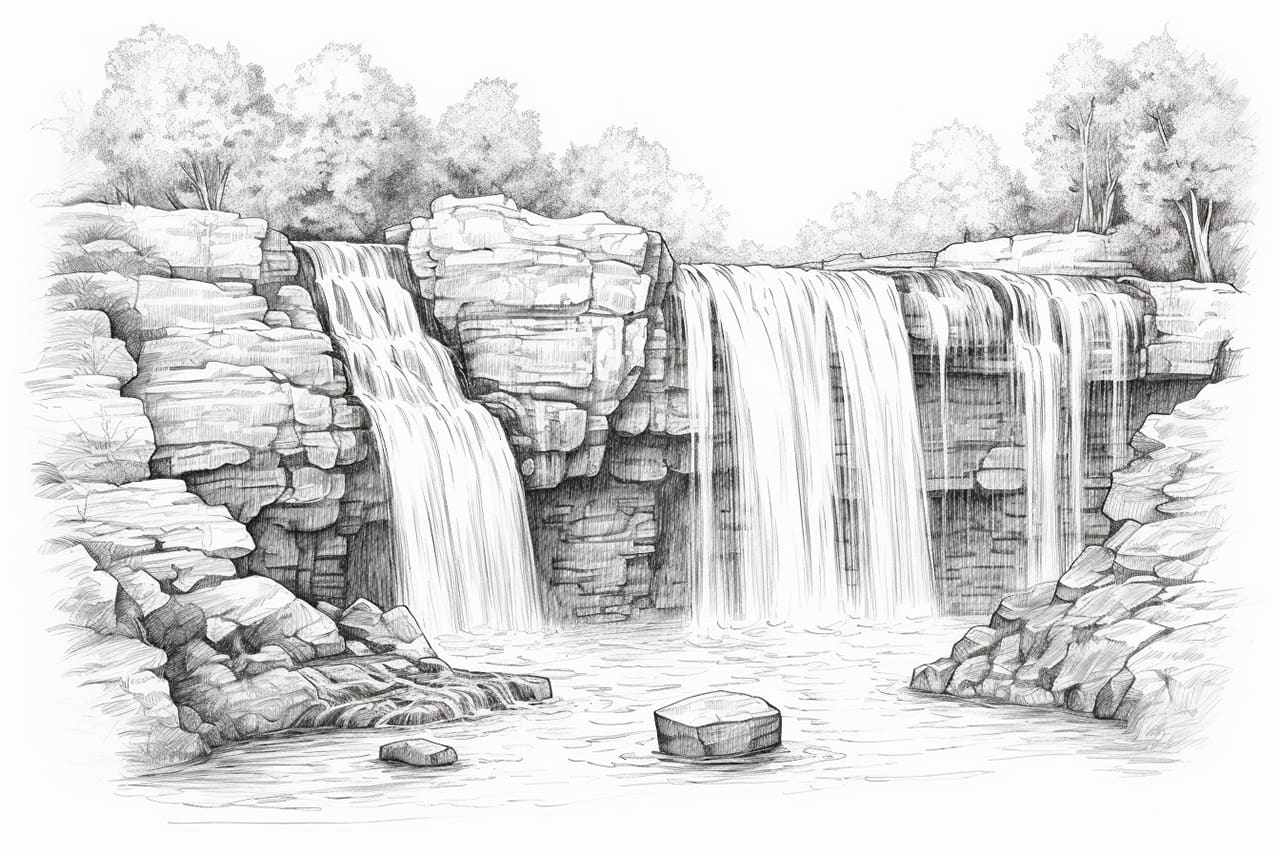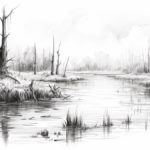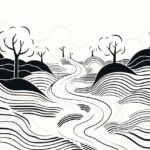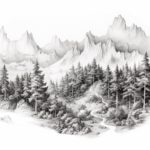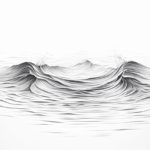Welcome to this step-by-step tutorial on how to draw a stunning waterfall. Whether you are an experienced artist or just starting out, this guide will help you create a realistic and captivating depiction of nature’s powerful wonder. So, grab your art supplies and let’s get started!
Materials Required
Before we begin, let’s make sure you have all the necessary materials. Here’s what you’ll need:
- Drawing paper
- Pencil (preferably HB or 2B)
- Eraser
- Fine-tip black pen or marker
- Watercolor paints or colored pencils
- Brushes (if using watercolor paints)
- Water cup (if using watercolor paints)
- Paper towel (for blotting)
Now that you have everything ready, let’s dive into the process of drawing a magnificent waterfall.
Step 1: Sketch the Basic Outline
Start by lightly sketching the basic outline of the waterfall using your pencil. Visualize the shape and structure of the waterfall as you draw. Begin with the top where the water begins to fall and then gradually create the cascading sections. Don’t worry about adding details at this stage; focus on the overall shape.
Step 2: Define the Rock Formations
Next, add more definition to the rocks around the waterfall. Pay attention to the different shapes and sizes of the rocks, as they contribute to the overall realism of the scene. Use your pencil to create varying textures, such as cracks and crevices, to make the rocks appear more natural.
Step 3: Add Details to the Waterfall
Now it’s time to bring the waterfall to life by adding details to the flowing water. Start by lightly sketching the motion of the water with horizontal lines. Make sure to follow the direction of the cascades and incorporate different levels of intensity. Add more lines for areas with more foam and spray.
Step 4: Add Depth and Perspective
To create a sense of depth and perspective, darken the rocks and the areas where the water recedes into the background. Use your pencil to shade these areas gradually, starting from the rocks closest to the viewer. This will enhance the three-dimensional effect and make the waterfall stand out.
Step 5: Ink the Sketch
Once you are satisfied with your pencil sketch, trace over it with a fine-tip black pen or marker. Carefully go over the outlines of the rocks and the flowing water. You can also add more details, such as small plants or trees, to the surrounding area. Erase any remaining pencil marks after the ink has dried.
Step 6: Add Color to the Waterfall
Now it’s time to add color to your drawing. If you are using watercolor paints, wet your brushes and choose the appropriate colors for the rocks and the water. Start by painting the lighter areas first, gradually adding darker tones to create shadows and depth. Experiment with blending colors to achieve a realistic look. If you prefer using colored pencils, apply them in layers, gradually increasing the intensity of the colors.
Step 7: Enhance the Surroundings
To complete the drawing, enhance the surrounding area of the waterfall. You can add trees, bushes, or any other elements that you imagine would complement the scene. Use your artistic creativity and consider the balance and composition of the overall drawing.
Conclusion
Congratulations on completing your realistic waterfall drawing! By following these step-by-step instructions, you have captured the essence and beauty of this natural wonder. Remember, practice makes perfect, so don’t be afraid to experiment and refine your technique. Share your artwork with others and continue to explore the wonders of art. Happy drawing!

